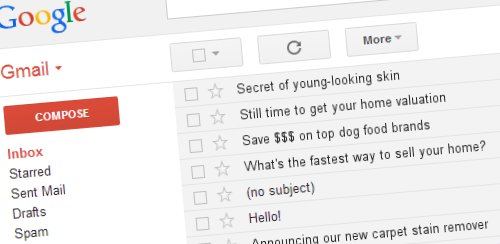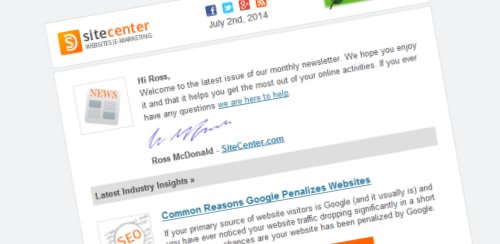
Of the millions of emails sent by UK small-medium sized businesses in 2013, an average of only 22.87% were opened, according to 2014 report by Sign-up.To. It's relatively easy and cost-effective to compose and send marketing emails to your contacts, but the number of recipients that actually read your emails depends on a number of factors, including when you send such emails, the recipients' experience of past emails, and the email subject wording and length used.
Now a major study by Return Path has analyzed more than 9 million messages sent by prominent global brands to more than 2 million consumers in an attempt to determine the subject lines most likely to result in an email being read. Here are the results:
Subject Line Content
- Urgency-based subject lines containing words like "still time" (15.54% increase) and "limited time" (3.05% increase) performed the best.
- Benefit-based subject lines containing words like "fastest" (5.30% increase) and "prettiest" (2.87% increase) performed second-best.
- Subject lines that instructed the recipient to do something with words like "register" (6.70% increase) or "add" (1.13% increase) also performed well.
- News-type subject lines that contain words like "announcing" (1.45% decrease) and "introducing" (1.22% decrease) had a slightly negative effect on opening rates.
- Surprisingly, value-based subject lines that contained words such as "discount" (0.10% decrease) and "save" (0.63% decrease) actually lowered opening rates.
- Subject lines of the "clickbait" style that are effective in increasing clicks on websites with words like "Secret of" (8.69% decrease) and "won't believe" (0.34% decrease) actually decrease email open rates.
- Other categories of email subject line had little effect on email open rates.
Subject Line Length
The length of subject line to use for marketing emails has long been the subject of debate. Whilst this study found correlations between the length of subject line and the opening rate, the authors concluded that this was no more than coincidence, and that the appearance of correlation is "clearly random". However, emails that used subject lines which were unusually long (more than 100 characters) had a much lower average opening rate.
Despite these findings, you should still keep in mind that different devices have different display capabilities, with some mobiles showing just 25-30 characters, as apposed to around 60 characters on desktops and laptops. This means that any subject line longer than this will become truncated when the user is viewing their inbox, so any words that you consider key to enticing the recipient to open the email should therefore be placed in the first 25 characters.
Conclusion
This study reveals significant insights that should be useful the next time you are composing a marketing email. Despite the effect of some words on opening rates, an email subject line should always reflect your company's image and what you have to offer. For example, sending an email with a subject line containing the words "still time" simply to encourage more recipients to open it will only decrease the opening rates of future emails if it is not relevant to the email's content.


